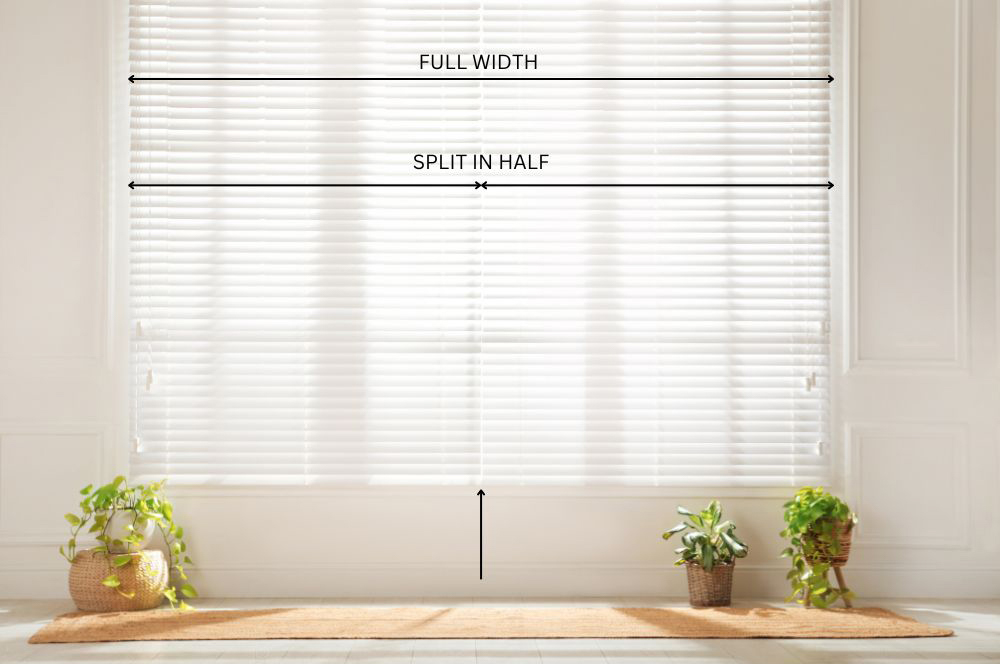Why Split Large Blinds?
GET AN INSTANT QUOTE
MADE TO ORDER for you
Up to 3 YEAR manufacturers guarantee
Making blinds for 50 years
MADE TO ORDER for you
Up to 3 YEAR manufacturers guarantee
Making blinds for 50 years
Large blinds, when made as one continuous piece, can be heavier. This added weight puts strain on the headrails, cords for Venetian Blinds in PVC or Wood and also chains and tubes for Roller Blinds, leading to sagging or bowing over time. Splitting the blinds into smaller sections helps distribute the weight more evenly, ensuring smooth functionality and prolonging the life of the blinds.
Splitting large blinds into multiple sections allows for greater control over light and privacy. For example, you can open one section while keeping the other closed, offering flexibility depending on your needs throughout the day. This feature is especially useful for spaces like living rooms, where you may want light in one area but prefer privacy in another.
Handling large, single-piece blinds can be cumbersome, especially when trying to lift, tilt, or lower them. By splitting the blinds into more manageable sections, you make operation easier and smoother, ensuring you can adjust them with minimal effort. This is true for all types of blinds, Roller Blinds to Timber or PVC Blinds, where ease of use is a key consideration.
Splitting large blinds doesn’t detract from their visual appeal. In fact, it can enhance the look by maintaining clean, straight lines across wide window spaces, reducing the risk of warping or sagging. This method is ideal for achieving a sleek, cohesive look, whether you’re installing Aluminium Venetian blinds, Roller blinds, or any other window treatment.
The cords, chains, and other mechanisms of a single large blind may wear out more quickly due to the increased strain of handling a larger area. Splitting the blinds reduces this strain, helping to prevent damage and extend the life of your window treatments. This is particularly crucial for delicate materials or for blinds installed in high-traffic areas.
If you’re considering splitting your large blinds, follow these steps to ensure a seamless and effective installation:
Start by measuring the full width of your window. For windows wider than 2.1 meters, it’s advisable to split the blinds into two or more sections. This ensures that each section will function properly without the risk of sagging.
After determining the total width, divide it into evenly sized sections – half. Each blind will need its own controls to ensure independent functionality and should be selected as opposite ends.

For exceptionally large windows that require more than two blinds, consider dividing them into multiple sections. Align the splits with the window dividers, ensuring that any small gaps between the blinds are positioned directly in front of the window frames. This approach helps to minimize visible gaps and maintains a seamless, cohesive look across the entire window.
Install each blind separately, aligning them side by side. Make sure they are level and evenly spaced to create a cohesive, polished appearance.
For Venetian blinds, it’s essential to consider the alignment of the slats when splitting large blinds. To ensure that slats are equally levelled across all blinds in the same window please provide this information on your order notes ” blinds in the same window”. When splitting Roller blinds, keep in mind that there will be a small gap between the fabrics, typically around 30mm.
Customer Reviews